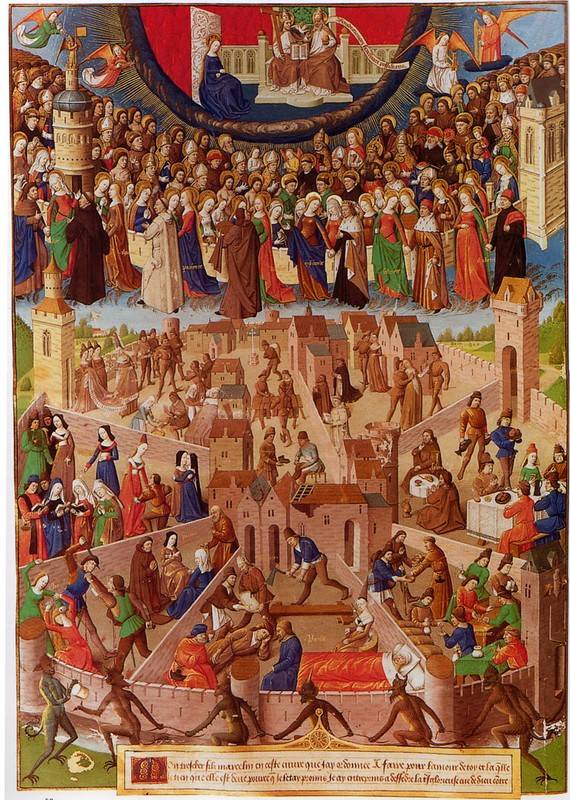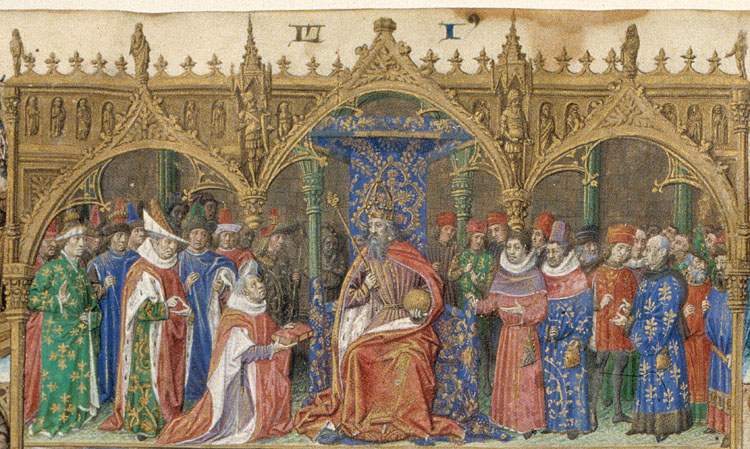
The medieval concept of the Two Cities: order below and salvation above, achieved by king and church working together.
All were subject to this unchangeable [natural moral] law whether they were rulers or the ruled. In the Middle Ages, the king was a creature of law, which he swore to safeguard. It was held that “the law makes the king” (lex facit regem). He was not the creator of law; his power was not above the law, and consequently he could not arbitrarily change it. Indeed, Robert Nisbet writes that, “No legal understanding was more widespread in the medieval period than that which declared the ruler to be under the law.” (1)
In fact, subjects had the right to resist and were freed from their oaths of fealty when the law was violated by the ruler. They might even resort to force since “to oppose force to the king’s use of force was, according to the common legal creed of the Middle Ages, not only permissible but even in certain circumstances obligatory.” (2)

Simon de Hesdin presents his translation of the `Facta et dicta memorabilia’ by Valerius Maximus to Charles V, King of France.
This bottom-up legislative process of “discovering law” that was sovereign over both ruler and ruled gave protection to the people, who knew they could constantly invoke it and hold authority accountable. This equality under the law is the basis of the rule of law and limited government that gave the West its great advantage over other civilizations.
(1) Robert A. Nisbet, Twilight of Authority (Indianapolis: Liberty Fund, 2000), 154.
(2) Fritz Kern, Kingship and Law in the Middle Ages: The Divine Right of Kings and the Right of Resistance in the Early Middle Ages; Law and Constitution in the Middle Ages, trans. S. B. Chrimes (Oxford: Basil Blackwell, 1968), 83.
John Horvat II, Return to Order: From a Frenzied Economy to an Organic Christian Society—Where We’ve Been, How We Got Here, and Where We Need to Go (York, Penn.: York Press, 2013), 233.












